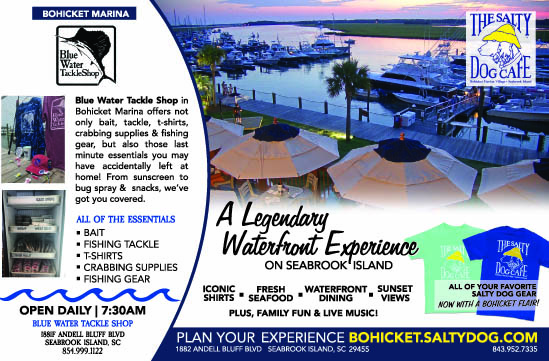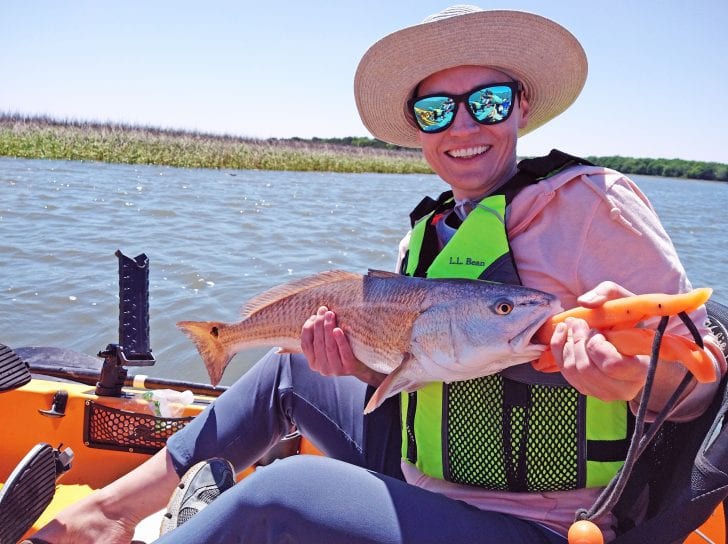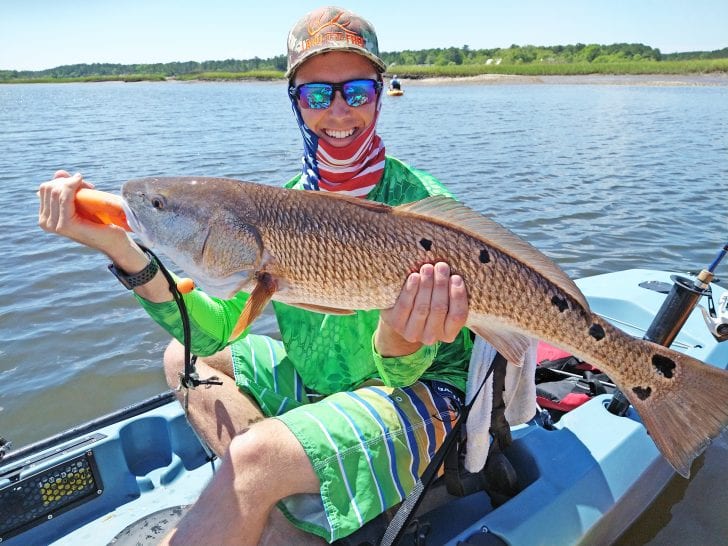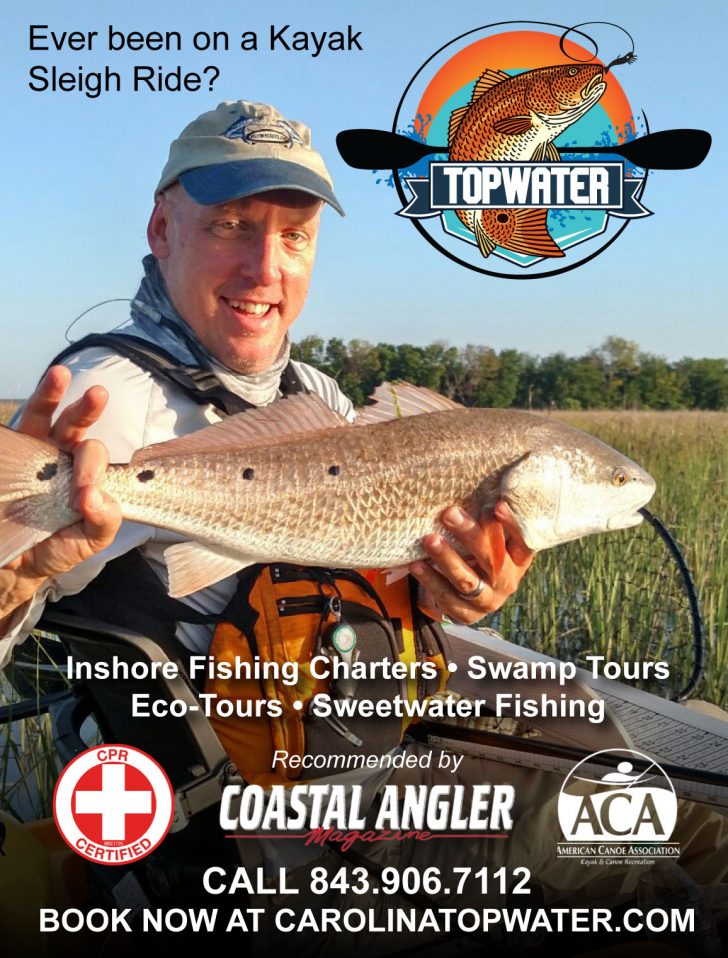Lowcountry Kayak Fishing | Chris Tweedy | May 2021
One of the most common questions I get asked by folks new to fishing in and around Charleston, is, “The Intracoastal Waterway looks all the same, how do you figure out where the fish are?”
One of the most common questions I get asked by folks new to fishing in and around Charleston, is, “The Intracoastal Waterway looks all the same, how do you figure out where the fish are?”
Aside from being taken out to these spots by someone that already knows, there are things you can do to increase your chances for a successful outing.
Over the course of the summer, in Coastal Angler Charleston print editions as well as follow-up video reports on the Coastal Angler Charleston Facebook page, I’ll be sharing scouting tips and tricks to be used to find new areas to increase your success rate along this amazing marine highway!
While the focus is on Bulls Bay and The Cape where I fish with Topwater Kayak Charters, this advice can be applied to most any inshore waters around Charleston.
The key to success for me has been finding small oasis areas in a sea of mud along the ICW that give gamefish a reason to orient to that spot.
This month we lay the foundation by exploring what to look for to begin turning the odds in your favor by identifying likely high probability spots as well as bypassing lower percentage spot by scouting as you move around on the water.
SCOUTING ON THE TIDES
The best way to locate new areas to target along the ICW is the tried and true advice most folks are handed at local tackle shops and internet forums, “know what the area looks like at the bottom of the tide.”
I’m also going to add the suggestion to scout at high tide, as it offers a top-down view of the actual routes bait and fish will travel especially when the water is more than a few inches deep.
While not very specific, this is invaluable advice. Stepping back and seeing the forest for the trees at top and bottom of the tides will help anglers specifically know what areas are like to hold or not hold fish, as it reveals the pathways bait and fish will utilize in their seasonal and tidal patterns.
Low Tide Focus
Inshore fishing is a game of eat and not get eaten. Flat, muddy stretches of bank along the ICW don’t offer much to each nor much protection from being eaten, so it’s not a very attractive place for fish to hold.
At low tide, I like to locate a cut or small finger creek that allows bait (and fish) a way up off the ICW as the tide rises.
It’s access points like this you’ll typically find redfish, trout, and flounder ambushing prey.
These finger/feeder creeks on both sides of the ICW are a fantastic starting point in your search for fish.
Add in some oyster structure (live and dead) or nearby docks and it adds nooks and crevices for bait and game fish to seek shelter from current and predators.
Ultimately, bait will cruise into and out of the creeks as the tide rises and falls, dumping bait out of the marsh or pushing it up into the grass begin development of a predictable pattern of movement that fish of all sizes can follow.

___________________________________
Finding these paths will quickly help narrow the search.
Miles of muddy banks that go dry 20 yards out will not usually be ideal target spots and can often be ignored completely, as there is nothing to attract and hold bait to the area and exposes fish to birds, dolphins, and sharks.
High Tide Focus
When I’m moving between spots, heading in or out on the tide, or simply exploring a new area, I’m making an effort to pay attention to the bank.
How far out the water drops from the banks, presence of live vs dead oyster shells, grass lines, and bottom composition primarily.
These factors play important roles in determining if, when, and for how long fish may relate to that section of bank.
Fish that live in areas that have the ICW as the biggest direct tidal influence in terms of current and landscape can typically be found in and around areas with the greatest diversity of bank and bottom conditions as well as proximity to deeper water.
Scouting at high tide will show the tops of the channels and cuts fish and bait will use to migrate up into creeks and onto flats at high tide, which in turn means the bait will use the same or similar creek or cut to exit as the tide falls.
These funnels and chutes are your high percentage areas.
Topwater’s video reports for June focus on examining some of these high and low tide scouting areas so be sure to check our Topwater Kayak Charters and Coastal Angler Charleston’s facebook pages for a visual breakdown of tidal scouting.
Hit me up with some questions/pictures of your scouting or give me a call to help you shorten the saltwater learning curve or any other area of your inshore game that needs some help.
For a kayak fishing charter you will never forget give us a call at 843-906-7112 or check us out on Facebook or at carolinatopwater.com.
Thanks for reading and tight lines,
Chris Tweedy, Owner/Operator
Topwater Kayak Charters
You may also enjoy reading:
Kayak Puddle Jumping – Guide To Fishing Great Ponds & Lakes In The Lowcountry
Kayak Fishing Gear: The Basics
Are You Ready to Slay Dinosaurs? Fishing for Bowfin
Tournament Time – Five Lures To Cover All The Bass Bases





